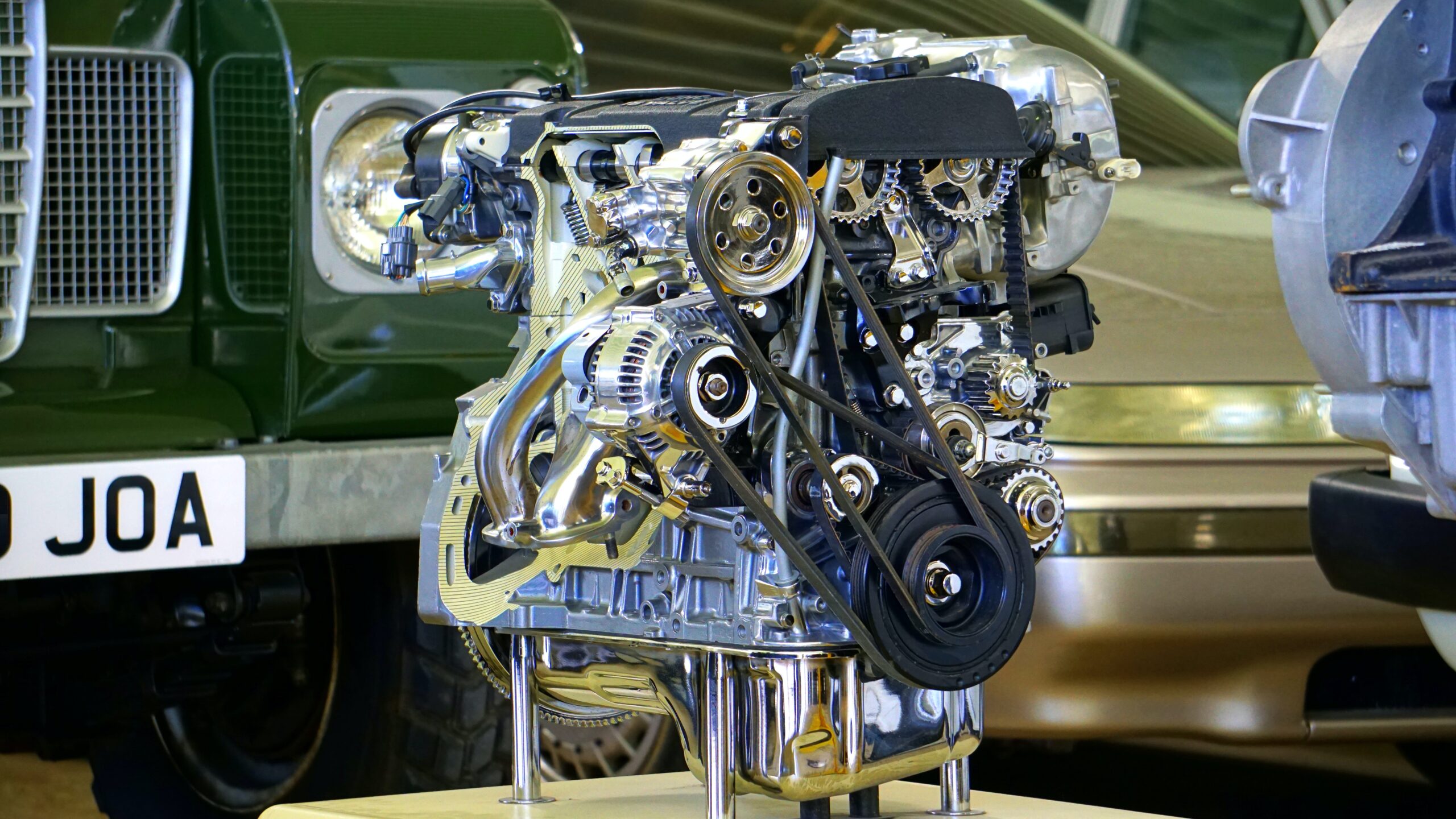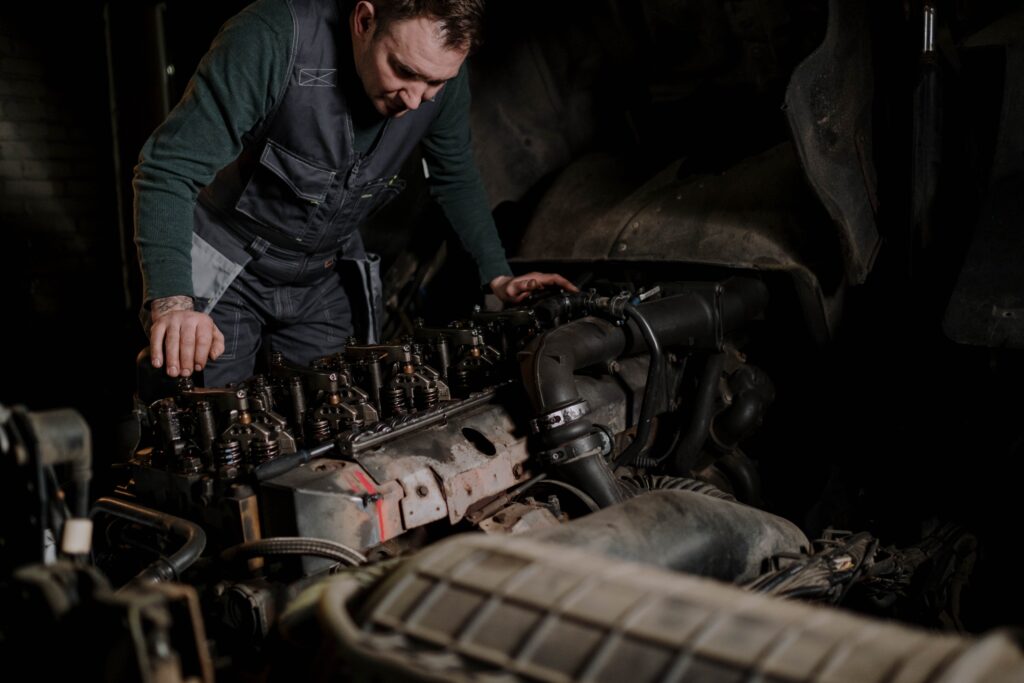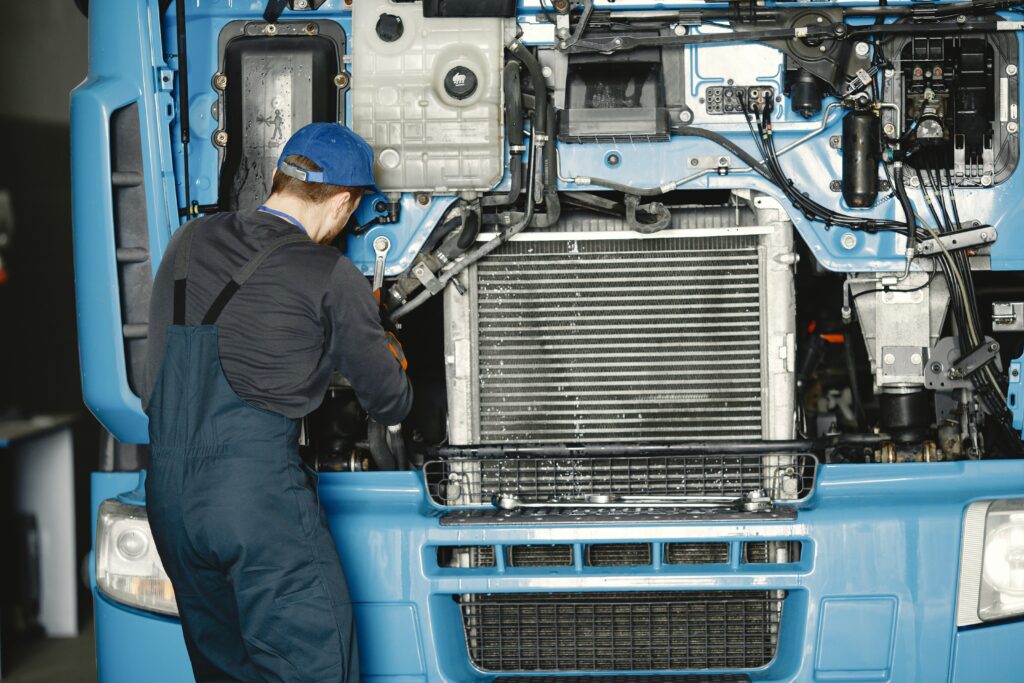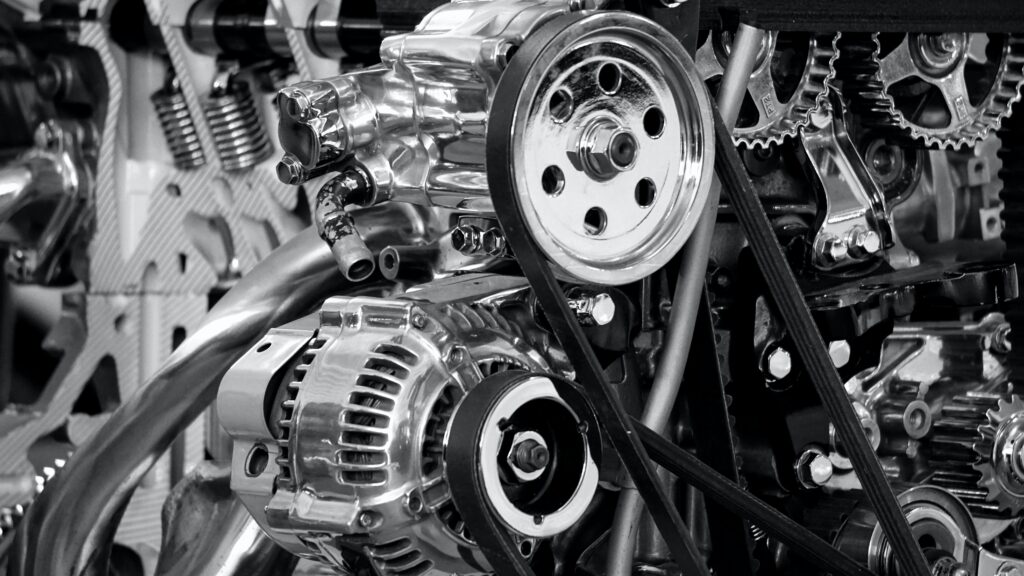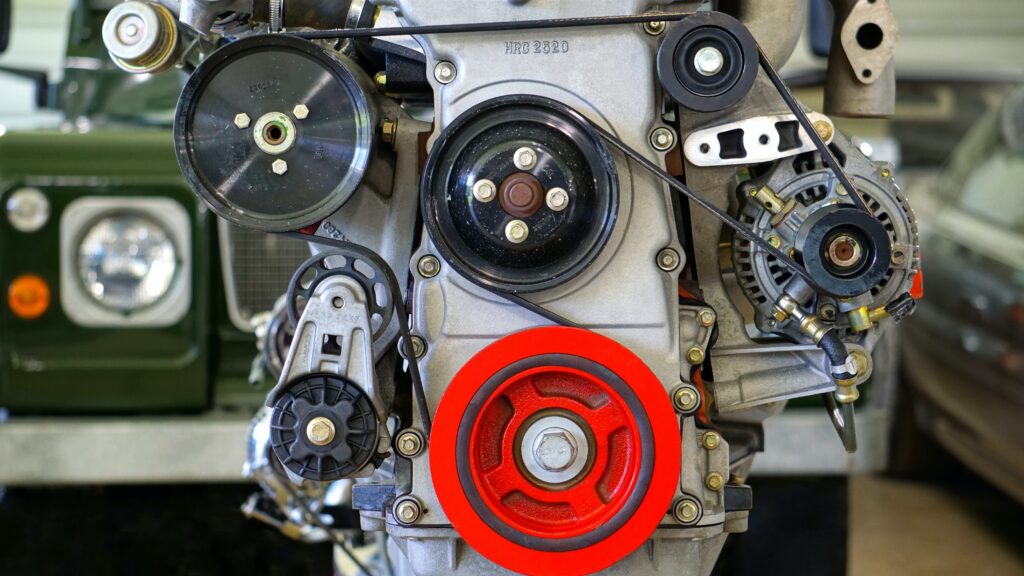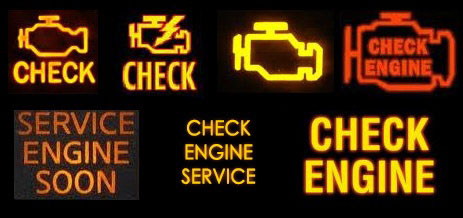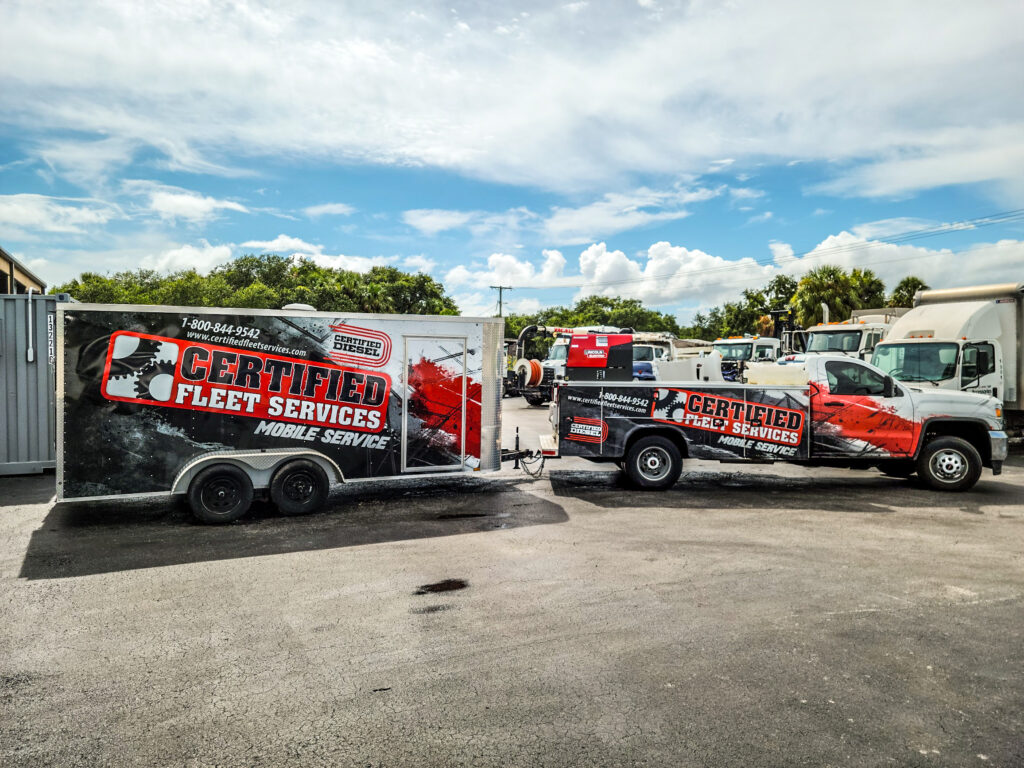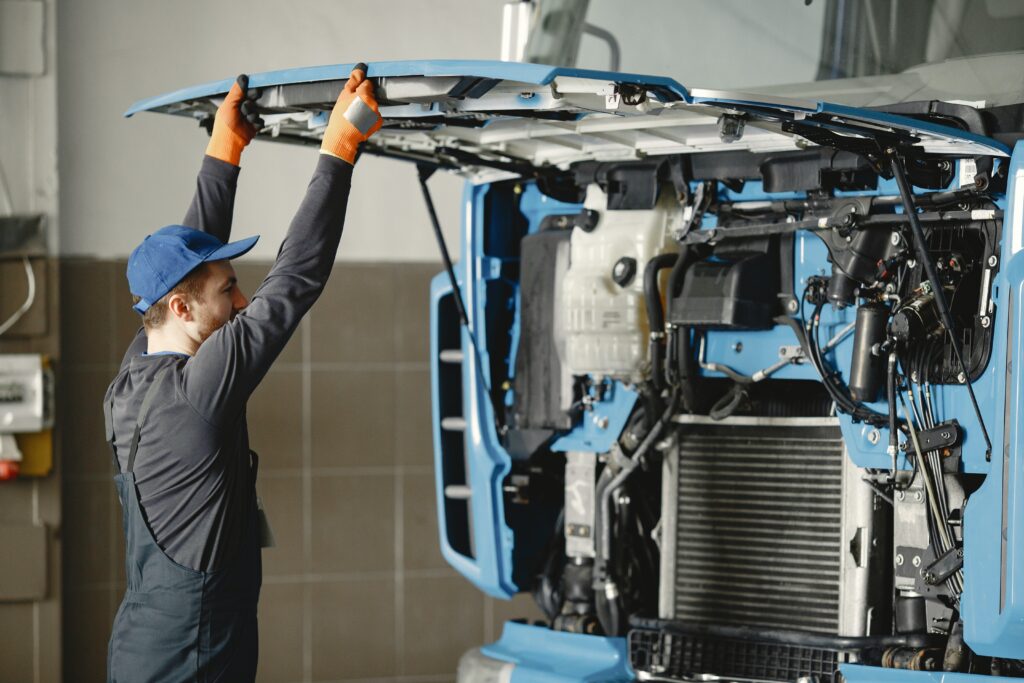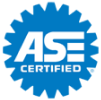Uh-oh. The check-engine light turned on. And the engine is jumping, sputtering, and smelling that funky gasoline smell again.
This could mean you’re having issues with the engine in your vehicle.
Fortunately, if you’re reading this, your engine might need a replacement or overhaul. What exactly is the difference between the two, though? And how can I tell which one my vehicle needs?
The answers and more coming at you lightning-fast from the fleet maintenance repair shop that helps get people back on the road faster.
(Note: If you smell gasoline while sitting in your vehicle or see a mixture of liquid at the bottom of your vehicle, you’ll want to exit the vehicle immediately and contact your mobile repair service technician to tow your truck to the nearest diesel fleet repair shop.)
Engine “replacement” versus “overhaul” versus “rebuild”
Before deciding to take the engine apart, your mechanic will first assess if there’s any damage under the hood. Next, they’ll recommend one of three different types of engine repair work be done on your internal combustion or diesel engine.
- An engine overhaul
- A complete engine replacement
- An engine rebuild
Depending on whether the engine parts in your car are operational, your mechanic will likely opt for the less expensive and more efficient truck, vehicle, or car engine overhaul or rebuild.
If your vehicle needs an engine overhaul, you can expect your mechanic to recommend one of three options: a replacement, rebuild, or total overhaul.
Engine replacements defined
Just the way the word sounds, an engine replacement requires that the engine and its components are taken out of the vehicle and replaced with new parts. The whole enchilada has to go.
Engine replacements tend to be the most costly engine repair work done on a vehicle. You can keep your engine in tip-top shape by bringing your vehicle in for frequent corrective and preventive maintenance so that worn-out and faulty parts can be replaced with new manufacturer parts as needed.
Engine rebuilds defined
Let’s just say you’re up to date on repair work for all parts of your vehicle (especially your transmission — this is usually one the most expensive repairs on a vehicle), but are still having issues with your engine.
Your vehicle seems to run okay, but you think there’s been some damage on your last haul. An engine rebuild may be most helpful for this situation.
A rebuild is when an engine requires new parts, and a diesel repair technician helps make the engine good as new. Rebuilds are preferable to a whole engine replacement, as rebuilds often cost less.
With a rebuild, your mechanic may swap out parts that need service — say for example spark plugs, parts of the engine’s cylinders, or rods — with new, after-market factory parts. Rebuilds may not involve as much repair work, and therefore cost less.
Engine overhaul defined
An engine overhaul usually requires a bit more attention and care than rebuilding an engine. The two most common types of engine overhauls are in-frame and out-of-frame overhauls.
In an in-frame overhaul, your mechanic will swap out parts “in the frame” of your vehicle, and replacing those parts with new road-ready components.
In an out-of-frame overhaul, you guessed it: a mechanic will take the engine out of its chassis.
What’s great about engine overhauls, though, is that they come with all required engine parts — such as piston rings, gasket sets, bearings, valves, washers, and other auto components for both the front and rear seals — needed to bring your engine back to life.
If you’re looking to keep your engine in great shape without having to pay for a completely new engine, engine overhauls may be the best way to go. When it comes to preventing damage and ensuring the overall health of your vehicle, schedule a vehicle intake appointment with your local mechanic or check out our extensive blog on what you need to know to keep your vehicle in tip-top shape.
Warning signs that indicate engine work is needed
It’s important to take the warning light in your vehicle seriously, so you never find yourself in the middle of nowhere on the side of the road with a smoking hood (We’ve been there before. Trust us, it’s no fun.).
When driving a semi– or regular-sized truck, if you see exhaust coming from the bottom of the hood or pools of oil leaking from the vehicle’s gaskets, you may be experiencing problems with your engine. You’ll want to know the following red-flag signs to prevent total engine failure:
- Increased fuel consumption due to build-ups of oil sludge or carbon
- Increased coolant consumption (this could indicate there’s a leak in your current engine)
- White, blue, or black smoke and exhaust from the engine while the vehicle is running (smoke means your car may be overheating and parts may need replacing)
- Loud knocking sounds and noise from under the hood of the vehicle
- An idle engine that won’t turn off (this phenomenon occurs when oil has entered the car’s combustion chamber or the engine has experienced significant wear and tear)
- A burning smell inside and outside of the car or vehicle when you accelerate or are at a stop
These tell-tale warning signs can help make you aware of your vehicle’s condition. It’s at this point it’s best to get your engine into the shop.
If at any point you notice smoke coming from the hood — or you smell a burning smell inside your car — don’t hesitate to call Certified Fleet Services at any point, and we’ll send a mobile repair technician to you as soon as possible.
Making engine overhauls, repairs, and rebuilds a breeze
Whatever the condition of your vehicle — or the cause of your engine concerns — Certified Fleet Services can get you back on the road faster. Our diesel repair technicians have over 30+ years of experience conducting in-shop, mobile, fleet, and preventive maintenance repair work on all makes and models of diesel engines.
We’ll make sure your engine runs clean and smooth, so it’s ready for the long haul.
If you think your engine needs service, don’t wait. Contact us today for immediate and dedicated service repair work for all your diesel needs.

